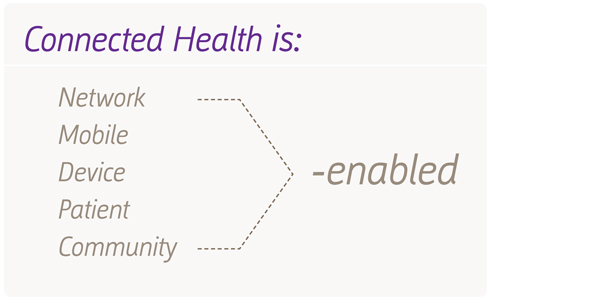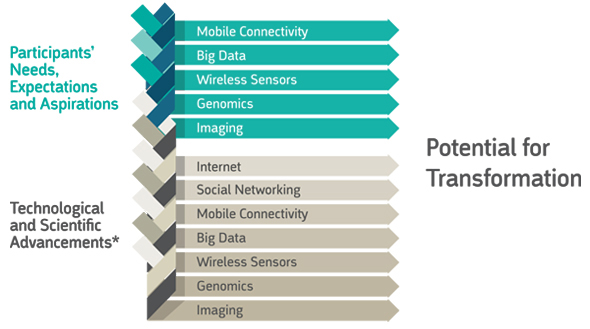The User-Driven Transformation of Health Care

In order for the future of health care to be truly responsive, strategic, and sustainable, however, it is imperative that we frame the discussion holistically. It’s especially important that this transformation be understood in terms of a user-driven health care ecosystem, in which a range of participants – from individuals to communities to care providers to industry players—are all actively pushing, informing, and enriching the shift to connected health. So, where do we begin?
Not just about technology

- Increased access;
- Improved care;
- Better outcomes;
- Lower costs; and
- Higher participant satisfaction.
As such, connected health embodies a true paradigm shift for health care, transforming how it is delivered and received on an individual and societal level.
Driving the transformation

With social health networks on the rise, family, friends, and communities are becoming more empowered members of care teams. With secure cloud-based tools and the growth of mobile devices in the workplace, HCP’s are able to provide better care while increasing efficiency. Finally, with the rise of big data, industry players will be able to isolate exactly what’s working for their customers and, as a result, more often deliver what those customers really need and want.
Mapping out participants
In order to work more efficiently, however, the entire ecosystem must be strategically connected so that each participant’s preferred outcomes may be realized. This process is rife with potential and opportunities, and it merits deep critical analysis. Who is driving the process? Who is connecting the dots in the ecosystem? What methods and ways of thinking might help speed up and improve this transformation? To start, we must frame and understand the ecosystem from the perspective of its key participants, with a focus on their goals, potential gains, and most desirable outcomes.
We must understand the ecosystem from the perspective of its key participants – what are their goals, potential gains, and most desirable future outcomes? In any system, however, the goals of one participant group can run counter to another’s, slowing the potential for transformation. The health care space is no exception: far too often, the dots are not being connected, and stakeholders end up working against one another as they try to transform the system. That’s why it’s important to pinpoint challenges and barriers between stakeholder groups.
What will connected health look like?
- Democratized Care. Everyone will have to be healthy, with access to care and data regardless of location, condition, or socio-economic status.
- Personalized Care. One’s health will no longer be measured by vital signs alone, but also by lifestyle behaviors and perception of health.
- Collaborative Care. Health seekers, their caregivers, and their communities will become more active and empowered members of the care team.
- Anytime, Anywhere Care. Care that happens anytime and anywhere will enable a shift from discrete moments of care to a seamless care continuum.
With the above tenets in place, a new health care paradigm will be possible. It will be proactive, allowing care to happen when a person is in need, regardless of time or location; preventative, integrating lifestyle changes into treatment plans; predictive, so that acute incidents and pandemics can get the swift response they need; and preemptive, so that we can stop disease before it starts. This new paradigm will also present a whole host of benefits across the ecosystem, such as greater accessibility, independence, flexibility, effectiveness, efficiency, transparency, interoperability, intelligence, and integration, to name a few.
What next?
In order for the vision of connected health to become reality, the ecosystem must evolve and develop collaboratively and cooperatively. Everyone, from those within the formal health care system to industry players who are innovating to push the system, will play a critical role in this joint effort. After all, the result—better, happier lives in more prosperous, connected societies—will benefit us all. How will the changing expectations of your customers and stakeholders influence the industry? If you want to be at the forefront of the transformation to connected health, questions to ask yourself, your colleagues, your customers, and your networks include:
- What are your customers’ and stakeholders’ unmet needs and expectations, and how will you meet them?
- How will these changing needs and expectations push your organization and the industry at large?
- How will they inform your role in the transformation to connected health?
- Who, internally, might leverage knowledge and best practices so that you can fill this role?
- What are your competitors doing to adapt to the connected health transformation, and what can you learn from them?
- What can your organization do internally to iteratively learn how to improve health? And how can your lessons learned serve as an example for others?
- What can you learn from other industries?
- How can you transparently, efficiently, and effectively address your organization’s needs and challenges?
- What will happen if you do not act now?